Dot One produces personalised textiles and prints based on DNA data
Royal College of Art graduate Iona Inglesby has launched a company that converts DNA data into unique graphic prints and patterned textiles (+ movie).
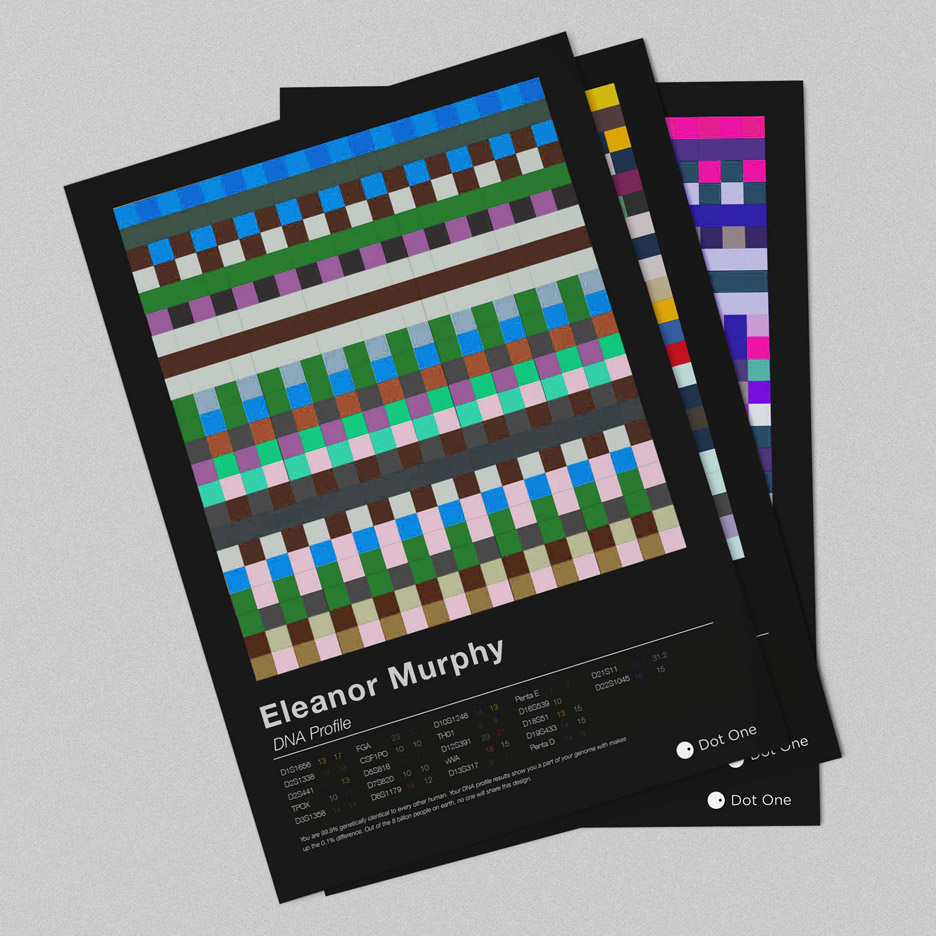
Inglesby's Dot One takes its name from the 0.1 per cent of each person's DNA that differs from that of other human beings.
Customers take a cheek-swab sample with a home kit, which is then sent on to a laboratory to extract their unique DNA profile. Dot One then applies a computer algorithm to the DNA data that generates a unique pattern, which can be turned into prints or woven textiles.
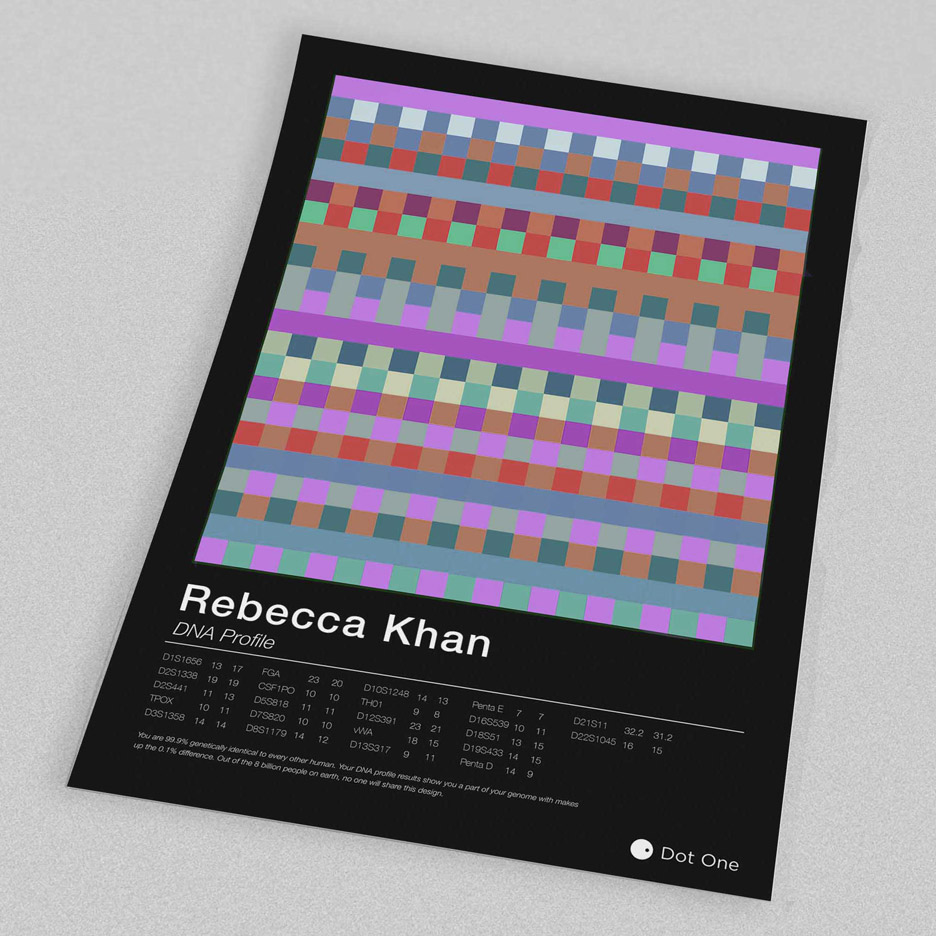
The patterns vary in colour, featuring different configurations of solid stripes and chequerboard prints.
"We assign a particular colour to every possible value in the range of genetic data," Inglesby told Dezeen. "When we look at a DNA profile then whatever genetic data is in that sample the corresponding colours appear."
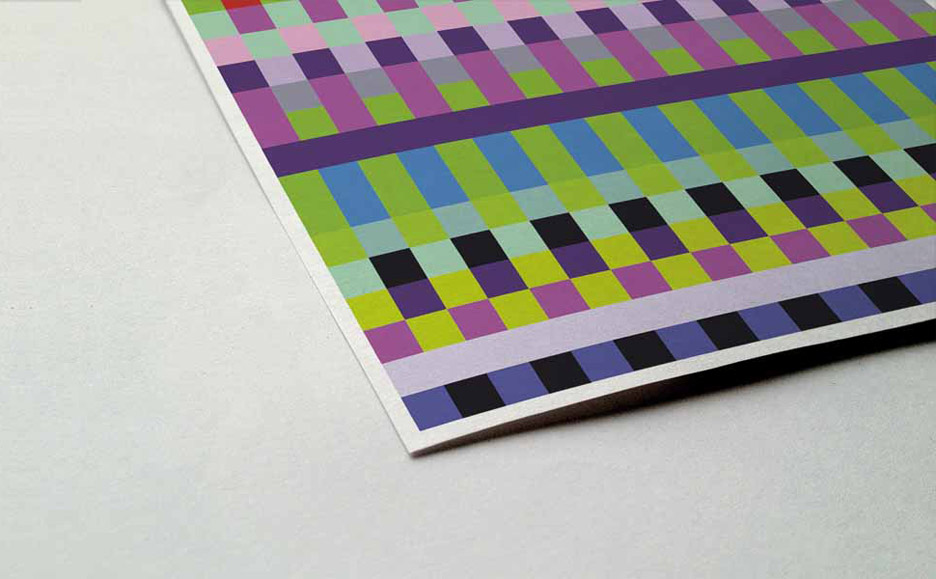
"We are looking at 23 points on the chromosomes with two values at each point, one from the mother and one from the father," she explained.
"The design is a repeat of this, as it is a lot easier to notice patterns of inheritance and similarities when you visualise the data in this way."
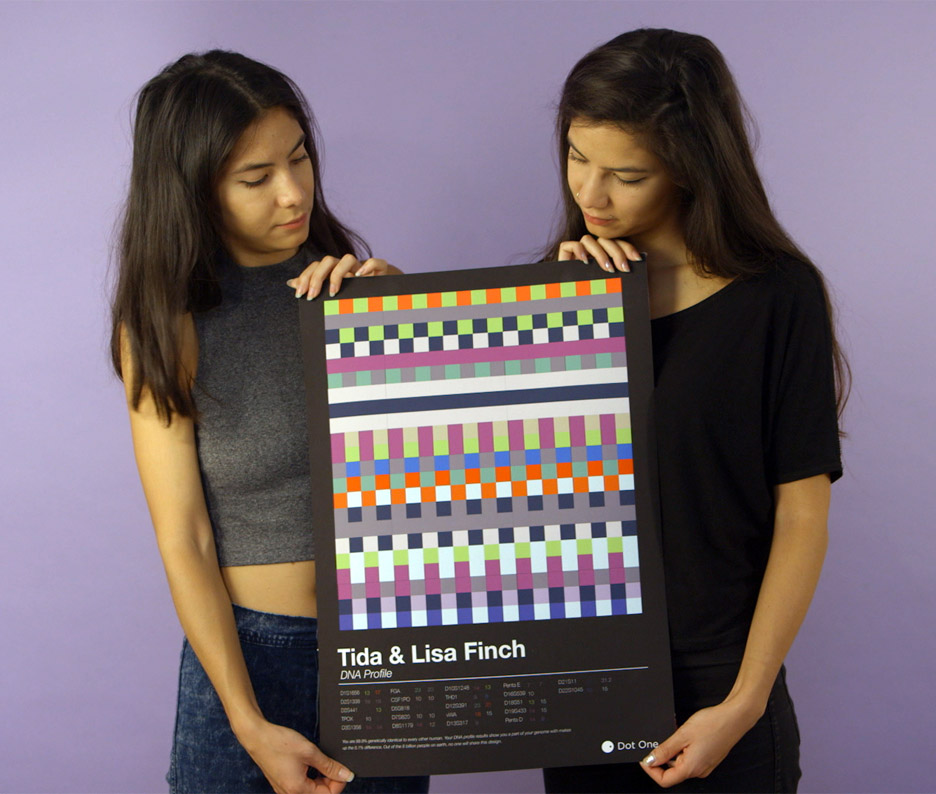
Weaver Helen Foot produces the textiles, which are hand-woven from lambswool. Dot One also offers family tree booklets that include graphic representations of the ways genes are shared between generations.
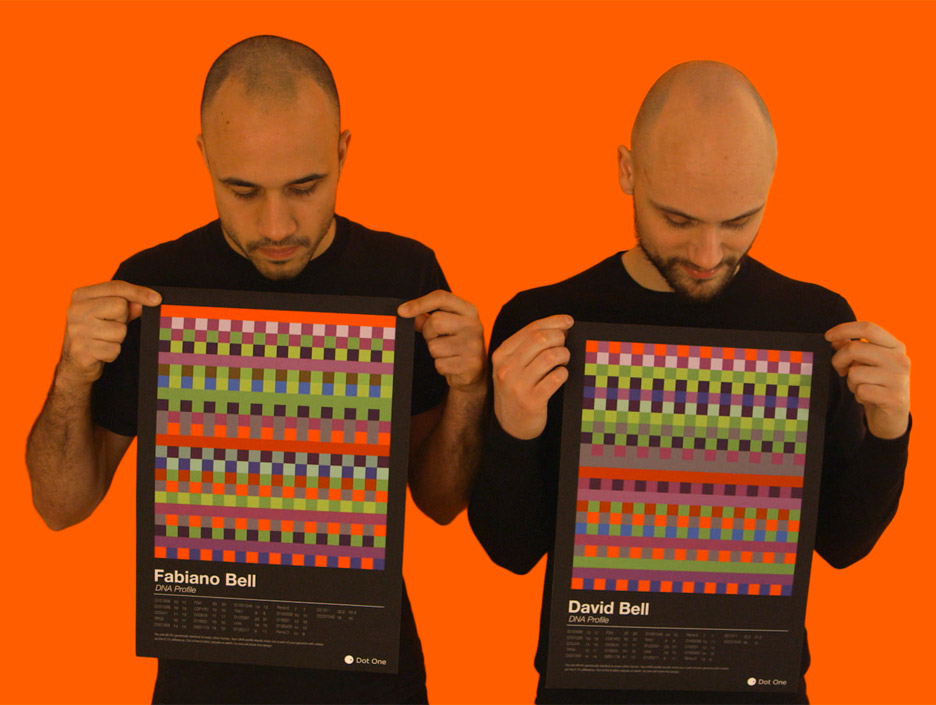
Inglesby came up with the idea for the business while working on a project called Dreamweaver at the RCA, which saw the designer use her relatives' DNA data to create a family tartan. After visitors to the graduate show requested their own tartans, Inglesby founded Dot One.
"The more I researched about genetics and this field of science the more I felt excited about how amazing our DNA is and I just wanted everyone else to get excited about it too," she told Dezeen. "It seemed the perfect way to communicate information using design as a way people could relate to it."
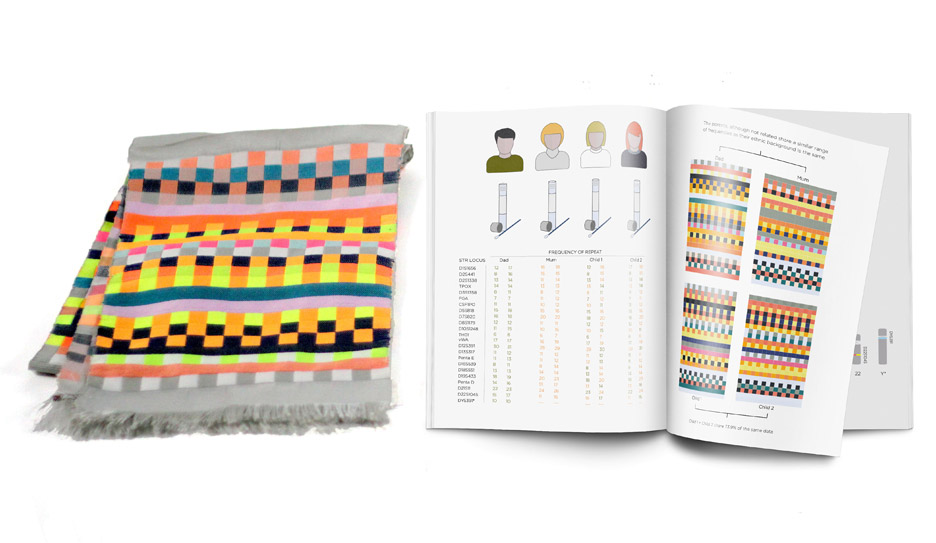
The designer hopes the prints and textiles will offer owners a more accessible and visually-led understanding of genetics.
"By taking DNA profiling out of the lab and into the consumer environment, it is a fantastic way to stimulate conversation around genetics and decoding the language our cells are created with," she said.
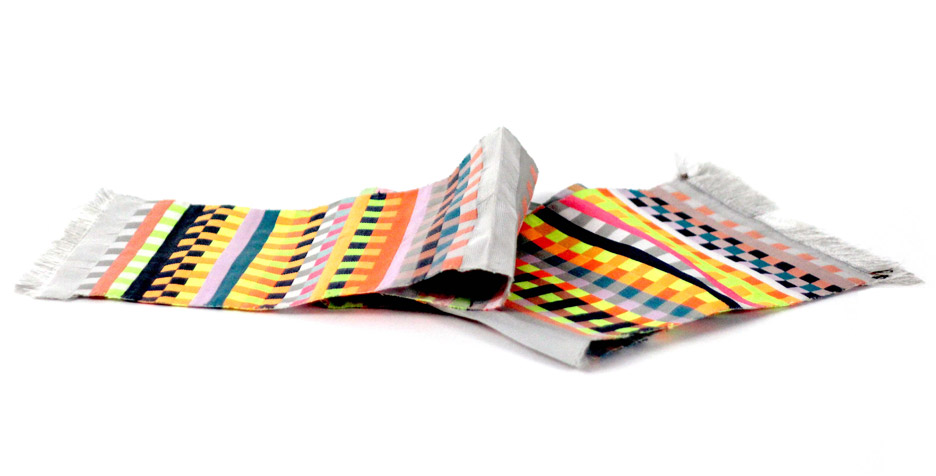
"We wanted to create a whole new customer experience around buying products; receiving a DNA kit in the post isn't usually part of the online buying process," added Inglesby. "The client becomes a crucial part of the product journey, becoming the designer through using their own genetic code."
Customisable fashion company Print All Over Me has also used unusual data to create unique textiles this year, creating an online app that transformed mouse movements and Google search data into patterns.
Cardiac radiographer and designer Brooke Roberts has also used digital knitting technology to create clothes with patterns based on MRI brain scans and medical imagery.